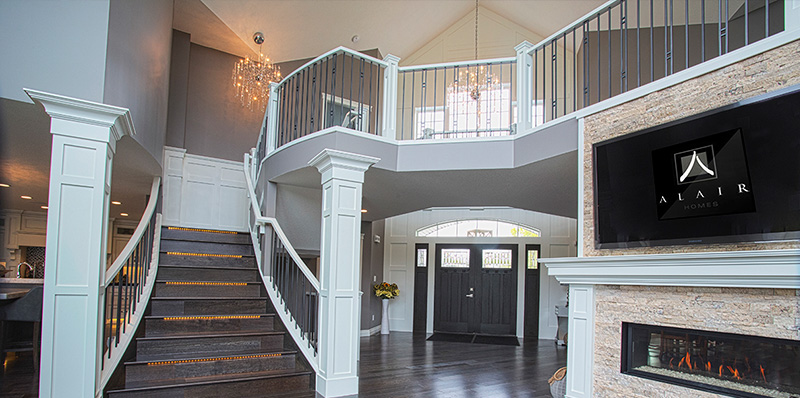Your staircase is a diagonal access way that conquers vertical space, a series of risers and treads that allow you to transition from one floor to the next. Unfortunately, just like slippery floors and loose carpeting, the stairs in the home present plenty of opportunity for a nasty fall. And, since the stairs may extend some way, that fall could have tragic consequences. It’s imperative that you blunt this potential danger, adding safeguards. Take away the headache of this line of thinking by applying common sense and some home improvement know-how to make your stairs safer.
Physical Fixtures Designed for Staircases
Residential codes require a handrail that extends from the top of the staircase to the bottom. Double this security with a second handrail on the opposite wall. This addition is particularly necessary when an elderly resident is having trouble navigating stairs. Weak legs appreciate the stability of two-armed support. Those same unsteady legs react well to the placement of rubber mats with enhanced grip. Opt for carpeting and mats that have clearly delineated edges to mark the edge of each step.
Employing a Technological Edge
Here’s where a talent for home improvement comes in handy. You can fit stick-on LED lights at regular intervals on the stairs to illuminate the way when a sleepy family member heads down the stairs for a midnight snack. Newer fixtures have built-in motion detectors, so they’ll turn on as the half-awake resident navigates the dark passage. There’s also a chance here to push this thinking up a notch by hiring an electrician. Have bright lighting fitted low to show every step, and add subdued illumination to the underside of handrails, showing a sleepy guest the exact location of unfamiliar household fixtures and features.
Maintenance and Installation Concerns
Homes age and parts break down. This is a natural part of living in an older home, but not something that can be afforded on a high-traffic staircase. Look for loose carpeting and shaky handrails, tightening wooden banisters in place, re-screwing and re-gluing soft fabric to risers and treads. Think smart by adding storage space alongside the carpet installation. Little cubbyholes placed at strategic intervals on the staircase can store kids toys and incautiously placed items that could cause a nasty tumble.
All of these tips can be integrated into a home without disturbing the decor and classic layout of your home. Avoid clashing patterns on a staircase fabric, decorative influences that conceal the edges of a step, keeping the design clean and vibrant. Fit those stair rugs and anti-slip treads, choosing rugs that are decoratively edged, accentuating the staircase while delivering safety. The same design ethic applies for lighting. Opt for recessed or subdued lighting, illuminating your hallways and stairs while maintaining the overall tidiness of the passage. Safety is paramount on the staircase, a connecting access point that sees more than its fair share of falls, but this safety and peace of mind can be achieved with plenty of style.
